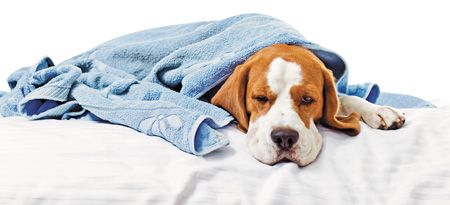When canine flu strikes: An eye on isolation best practices
Canine influenza = scary headlines. We know its contagious, but just how long do affected dogs shed the virus?

If you're seeing canine influenza in your practice, these findings show it's best to suggest a 21-day isolation period. (Photo Getty Images)As you know all too well, canine influenza has come onto the scene and created frenzy among pet owners. The outbreak in Chicago beginning in March 2015 was certainly headline news. The virus was identified as the H3N2 strain. Nearly 200 dogs had positive test results for the strain.
It's the role of the veterinarian to calm fears and be able to advise clients. One of the issues that people want to know is how long to isolate infected dogs after they have been ill.
A query into quarantine
A recent study investigated the duration of shedding in regard to how long affected dogs should be isolated to avoid spreading further infection.
The study focused on the medical records of 16 affected dogs from three shelters in the Chicago area during March to May 2015. Nasal swab specimens from these dogs had been tested periodically for at least 15 days after the first positive test result. The dogs had varying degrees of clinical signs and were representative of mixed age groups and breeds and of both genders.
The nasal specimens were collected by trained veterinarians or veterinary technicians, and a canine respiratory real-time multiplex polymerase chain reaction (PCR) assay was used to test the specimens. The testing panel also included other common causes of canine respiratory disease. Virus isolation was also performed to be sure of the identity of canine influenza H3N2.
All but one of 10 dogs housed in one of the shelters had detectable virus shedding 13 days after the initial positive result. Two dogs were lost to follow-up 17 and 19 days after their first positive result. Four of the remaining eight still had viral shedding at 20 to 24 days after the first positive result. Two of five dogs in another shelter were still shedding virus 15 days after the first test result. It's interesting to note that shedding appears to be intermittent, because as many as four negative results were followed by positive results at a later date.
Exam-room application
The data here suggest that the interval of potential spread of the virus from shedding in naturally infected dogs with canine influenza A H3N2 virus is lengthier and more intermittent than previously suspected. However, the researchers proposed that it's possible that animals housed in shelters are more stressed and shed viral particles longer than pet animals.
After the shelters extended their isolation protocols to 21 days, new infections decreased substantially. To be safe, if you're seeing canine influenza in your practice, based on these findings, suggest a 21-day isolation period just in case.
Newbury S, Godhardt-Cooper J, Poulsen KP, et al. Prolonged intermittent virus shedding during an outbreak of canine influenza A H3N2 virus infection in dogs in three Chicago area shelters: 16 cases (March to May 2015). J Am Vet Med Assoc 2016;248:1022-1026.
Link to abstract: http://avmajournals.avma.org/doi/full/10.2460/javma.248.9.1022